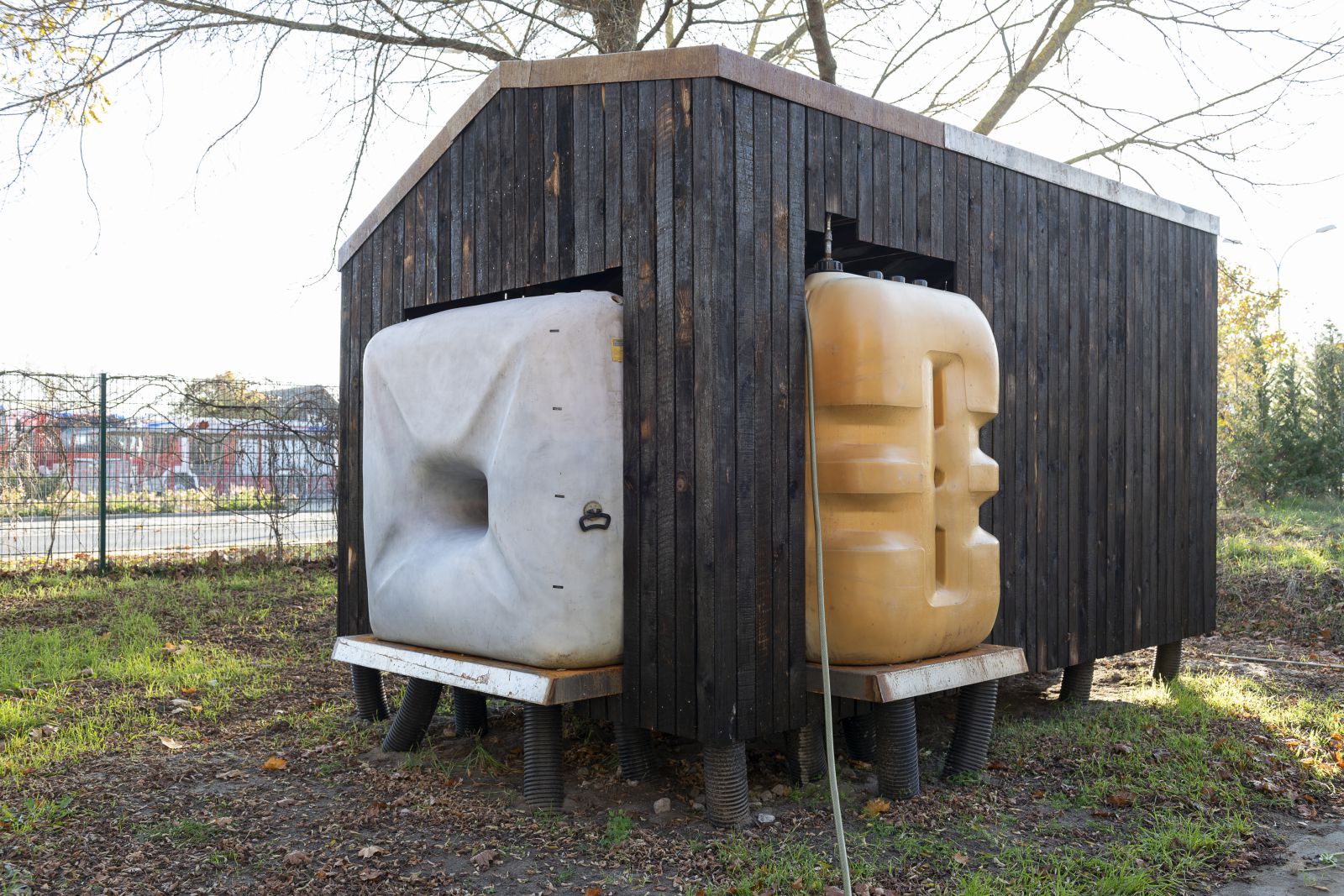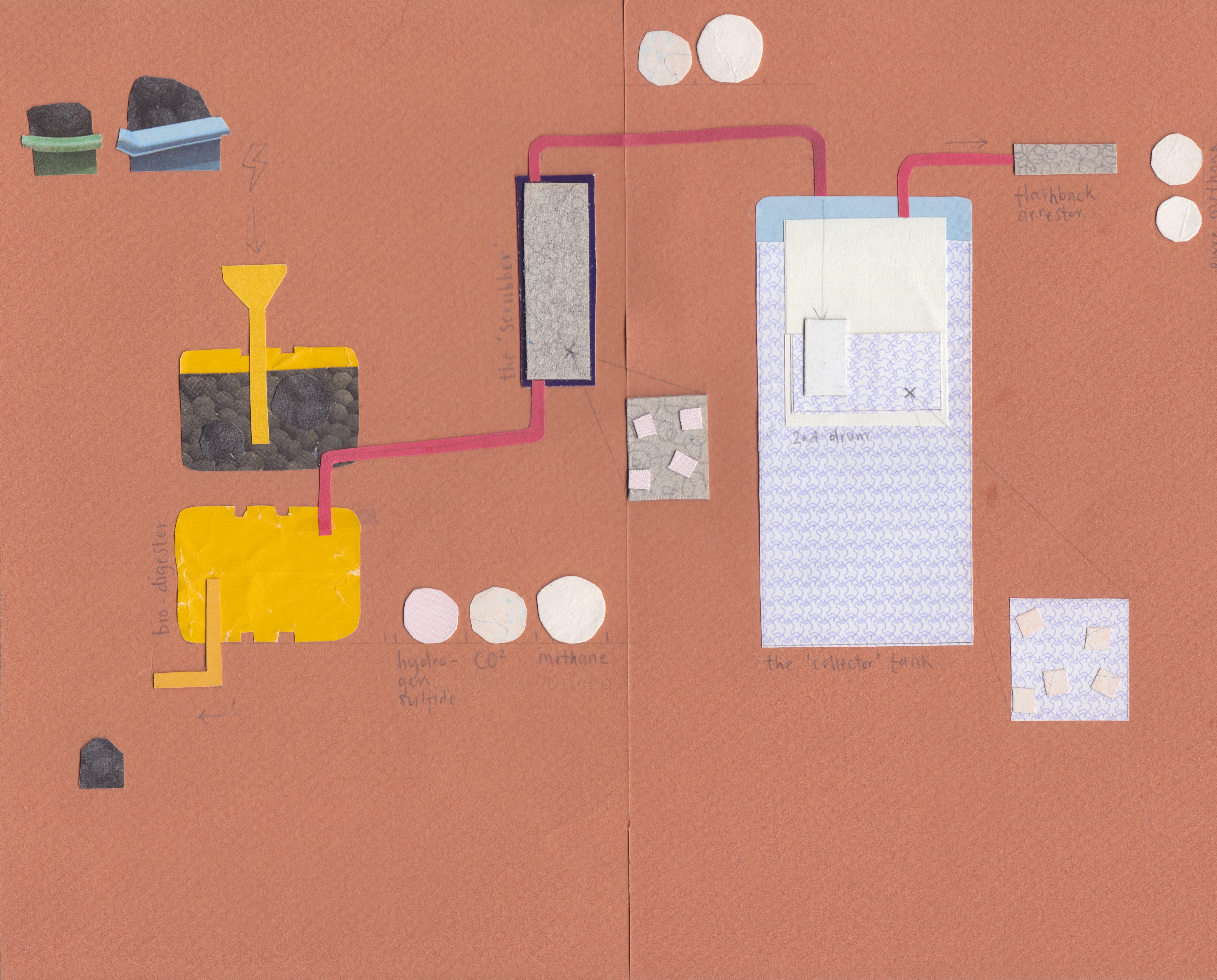
TraShed is an architectural sculpture, designed around a closed-circuit fuel system producing a 100% biological alternative to fossil fuels. Much like the process of biogas being produced from organic waste, the design process for TraShed sought to reinstate existing, used “waste” materials and further demonstrate how energy and material lifespans can be extended, or even made cyclical.
Biogas is generated from a mixture of gases produced during the biodegradation of organic matter in the absence of oxygen, primarily methane and CO2. Biogas can be produced by organic materials such as manure, sewage and food waste. Non-commercial systems typically run off the latter, as is the case with the Kunststrom biogas system, which is fed by residents’ food waste and inedible food parts from the TRAFO kitchen.
Housed within TraShed, a purpose built and designed structure, the Kunststrom biogas system operates in a unique way, separating the biodigesting and gas collection across three separate tanks. The first tank, the Biodigester, can hold upto 1000L of food waste. This is insulated to maintain a constant temperature and high production rate, to encourage the biodegradation of the waste by microorganisms - in this case, cow manure!
From the Biodigester, the methane and CO2 gas mix moves along a pipe towards the second, lower pressure Gas Tank. Exiting the pipe at the very bottom of the yellow Gas Tank, the biogas rises up through pH-controlled water, cleaning itself of excess CO2 through dissolution. As biogas is collected, the increased pressure starts to push the water in the tank through a pipe into the final container, the Water Tank.
The Water Tank contains the overflow water, rising and falling with gas production and use. A flotation device within the tank indicates when the pressure level in the Gas Tank is at its limit and needs to be used. As the biogas exits the Gas Tank, heading towards the TRAFO kitchen, the water level in the Water Tank falls until it reaches an equilibrium with the Gas Tank water.
Alongside the biogas, TraShed’s Biodigester produces biogas digestates; the residues left from the anaerobic fermentation of the food waste. These digestates contain valuable plant nutrients and are commonly used as organic, liquid fertilizers. At E-WERK, this liquid fertilizer will be used in the vegetable garden, aiding food production and contributing in part towards a circular food economy.

About Cherry 26
Jann Spille (Luckenwalde, Germany)
Jann Spille studied Social Sciences in Cologne, Berlin, Paris and Istanbul before relocating to Luckenwalde in 2019. He is currently training as a carpenter in Brandenburg.
Edie Parfitt (Manchester, UK)
Edie Parfitt studied BSc Architecture at The Bartlett School of Architecture, London. She works as a production and architectural designer on installations and temporary structures. She is interested in projects that encourage public engagement and challenge traditional uses of space.
Freya Bolton (London, UK)
Freya Bolton is a designer and maker based in London. She designs and builds architectural projects with a focus on material reuse alongside public and ecological engagement. She holds a BSc in Architecture from The Bartlett School of Architecture and is currently studying her MA at the Royal College of Art.